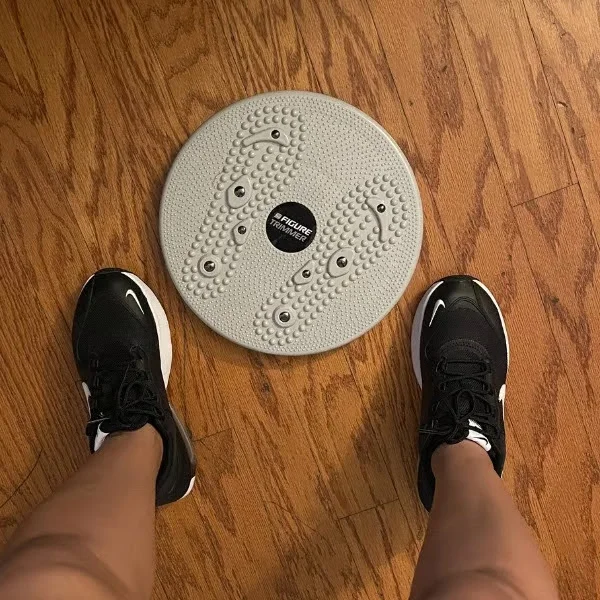The Fitbit Charge 5 stands out in the crowded fitness tracker market. It monitors heart rate, sleep patterns, and daily activity levels. Users appreciate its sleek design and user-friendly interface. As a fitness enthusiast with years of experience, I found this device to be reliable and accurate. The insights it provides are invaluable for anyone looking to improve their health. In this review, readers will discover key features, performance comparisons, and potential drawbacks. By the end, you will understand if the Fitbit Charge 5 is the right choice for your fitness journey.
Key Takeaways
- Choose a fitness tracker that highlights the key features you need, such as heart rate monitoring or built-in GPS, to maximize your workout efficiency.
- Look for models with long battery life and fast charging options to ensure your tracker is ready when you are.
- Ensure compatibility with your smartphone or other devices to sync data easily and access all features without hassle.
- If you enjoy outdoor activities, consider a tracker with built-in GPS functionality for accurate distance tracking without needing your phone.
- Select a fitness tracker that offers music storage and playback options to keep you motivated during workouts without carrying extra devices.
- Use the buying guide to compare different models and make an informed decision based on your personal fitness goals and budget.
- Battery Life: Up to 6 days with fast charge
- Compatibility: Compatible with iOS 12.2 or higher & Android OS 7.0 or higher
- Built-In GPS: With built-in GPS, leave your phone behind and explore the outdoors with pace and distance on your tracker and see a workout intensity map showing your route and effort in the app when you’re done
- 24/7 Heart Rate: Use 24/7 heart rate to better track calorie burn, optimise workouts and uncover personalised health trends that inspire you to make moves on your health and fitness goals
- Store & Play Music: Store and play your music and podcasts plus Spotify - Connect & Control and add Deezer playlists; subscriptions required for use of music services; not available in all countries.Active Zone Minutes: This feature alerts you to which heart rate zone you’re in so you can see if you’re working hard enough to reach your goals.
Key Features
The Fitbit Versa 3 has a built-in voice assistant. I found it convenient to ask for the weather or set reminders without touching my phone. This feature is helpful during workouts when my hands are busy.
Another notable aspect is the Active Zone Minutes feature. It tracks how much time you spend in different heart rate zones. I appreciated this because it helped me push myself during exercise and stay motivated.
The watch also comes with both small and large bands. This means it can fit different wrist sizes comfortably. I switched out bands for style, which was easy and fun.
I noticed that the device is lightweight, making it comfortable to wear all day. It didn’t feel bulky on my wrist, even during long runs or while sleeping.
However, the lack of advanced sleep tracking features was a bit disappointing. I expected more insights into my sleep patterns.
Battery Life and Fast Charging
The battery life of this fitness tracker is impressive. It can last up to six days on a single charge. This means I don’t have to worry about charging it every night. It fits well into my busy schedule.
I found the fast charging feature very useful. A quick charge can give me enough power for a few days. This is great when I’m in a hurry or forgot to charge it overnight.
Compatibility is another strong point. It works with both iOS 12.2 or higher and Android OS 7.0 or higher. I had no trouble connecting it to my smartphone. Notifications and app alerts come through seamlessly, which keeps me informed without checking my phone constantly.
However, users should consider their daily routines. If you are someone who uses many features, the battery might drain faster than expected. For those who prefer basic tracking, the battery life will likely meet your needs.
Compatibility with Devices
The fitness tracker effectively tracks pace and distance without needing a phone. This feature is crucial for anyone who enjoys outdoor activities like running or cycling. I found it convenient to leave my phone at home during my morning runs.
It also provides workout intensity maps, which offer detailed analysis of my performance. After each session, I could see exactly how hard I pushed myself. This helped me improve my training over time.
For cyclists, this device is equally beneficial. It captures important metrics that can enhance your rides. Whether you’re tackling steep hills or cruising on flat roads, having this data can motivate you to keep going.
However, some might miss the added features that come with syncing to a smartphone. While I appreciate the independence of not needing my phone, others may prefer real-time notifications during workouts.
Built-In GPS Functionality
The built-in GPS is a game changer for tracking workouts. It continuously monitors my heart rate, providing accurate information on calorie burn. I appreciate how it helps me see just how hard I’m working during my runs.
This feature allows me to optimize my workouts by keeping track of heart rate zones. I can push myself harder when needed or ease off if I’m overdoing it. This insight is invaluable for anyone serious about fitness.
Over time, I’ve noticed personalized health trends thanks to the GPS functionality. It shows me patterns in my activity levels and heart rate. This information has helped me adjust my routines for better results.
However, there are some downsides. Sometimes, the GPS can take a moment to connect, especially in areas with poor signal. This can be frustrating when I’m ready to start my workout.
Music Storage and Playback Options
The fitness tracker offers a great feature for music lovers. You can store and play music directly from the watch. This is perfect when you want to work out without carrying your phone. I found it really convenient during my runs.
It supports playlists from Spotify and Deezer, but you need a subscription for those services. This could be a downside if you don’t already use these apps. However, having music right on my wrist made my workouts more enjoyable.
The heart rate monitoring is impressive too. It tracks my heart rate all day and night. I noticed how it helped me understand my fitness levels better. Sometimes, I was surprised by how high my heart rate got during intense workouts.
On the flip side, I did experience some inaccuracies at times. There were moments when it didn’t match up with my gym equipment readings. Overall, though, heart rate monitoring is a valuable tool for anyone serious about their health.
Buying Guide
When choosing a fitness tracker, consider your specific needs. Think about what activities you will do most often.
If you are an athlete, look for features that support intense workouts. A tracker with multiple sport modes can really help you track your performance accurately. I found this feature useful when training for a 5K run.
For casual users, basic tracking may be enough. A simple step counter and sleep monitor can provide valuable insights without overwhelming you. I appreciate how easy it is to use these functions daily.
Durability is another key factor. If you plan to wear your tracker while swimming or in tough conditions, ensure it is water-resistant and sturdy. I once had a tracker that broke during a hike, which was disappointing.
Also, think about the design and comfort. You’ll want something that feels good on your wrist throughout the day. I prefer lightweight models that don’t feel bulky.
Final Remarks
The review highlights the essential features of fitness trackers, emphasizing their role in promoting health and wellness. Key aspects such as battery life, compatibility, and built-in GPS are crucial for users seeking a reliable device. Continuous heart rate monitoring and music storage options enhance the overall experience, making these devices suitable for various lifestyles.
Investing in a quality fitness tracker can significantly impact fitness goals and daily activity levels. Readers are encouraged to consider their specific needs when selecting a device. Further exploration of user reviews and comparisons can provide additional insights. Take the next step toward a healthier lifestyle by choosing the right fitness tracker today.
Frequently Asked Questions
What is the battery life of the Fitbit Versa 3?
The Fitbit Versa 3 offers up to 6 days of battery life with fast charging capabilities, allowing users to recharge quickly for continuous use.
Is the Fitbit Versa 3 compatible with all smartphones?
The Fitbit Versa 3 is compatible with devices running iOS 12.2 or higher and Android OS 7.0 or higher, ensuring a wide range of compatibility.
Does the Fitbit Versa 3 have built-in GPS?
Yes, the Fitbit Versa 3 features built-in GPS, enabling users to track their pace, distance, and workout intensity without needing a smartphone.
How does the heart rate monitoring work on the Fitbit Versa 3?
The device provides 24/7 heart rate monitoring, which tracks calorie burn and optimizes workouts while revealing personalized health trends.
Can users store music on the Fitbit Versa 3?
Yes, users can store and play music, podcasts, and playlists from Spotify and Deezer (subscriptions required) directly on the device.
What additional features does the Fitbit Versa 3 offer?
The smartwatch includes Alexa built-in for voice commands and comes with both small and large bands for customizable fit options.
What are the dimensions of the Fitbit Versa 3?
The product dimensions are 1.59 x 1.59 x 0.49 inches, weighing only 0.71 ounces, making it lightweight and comfortable for daily wear.






